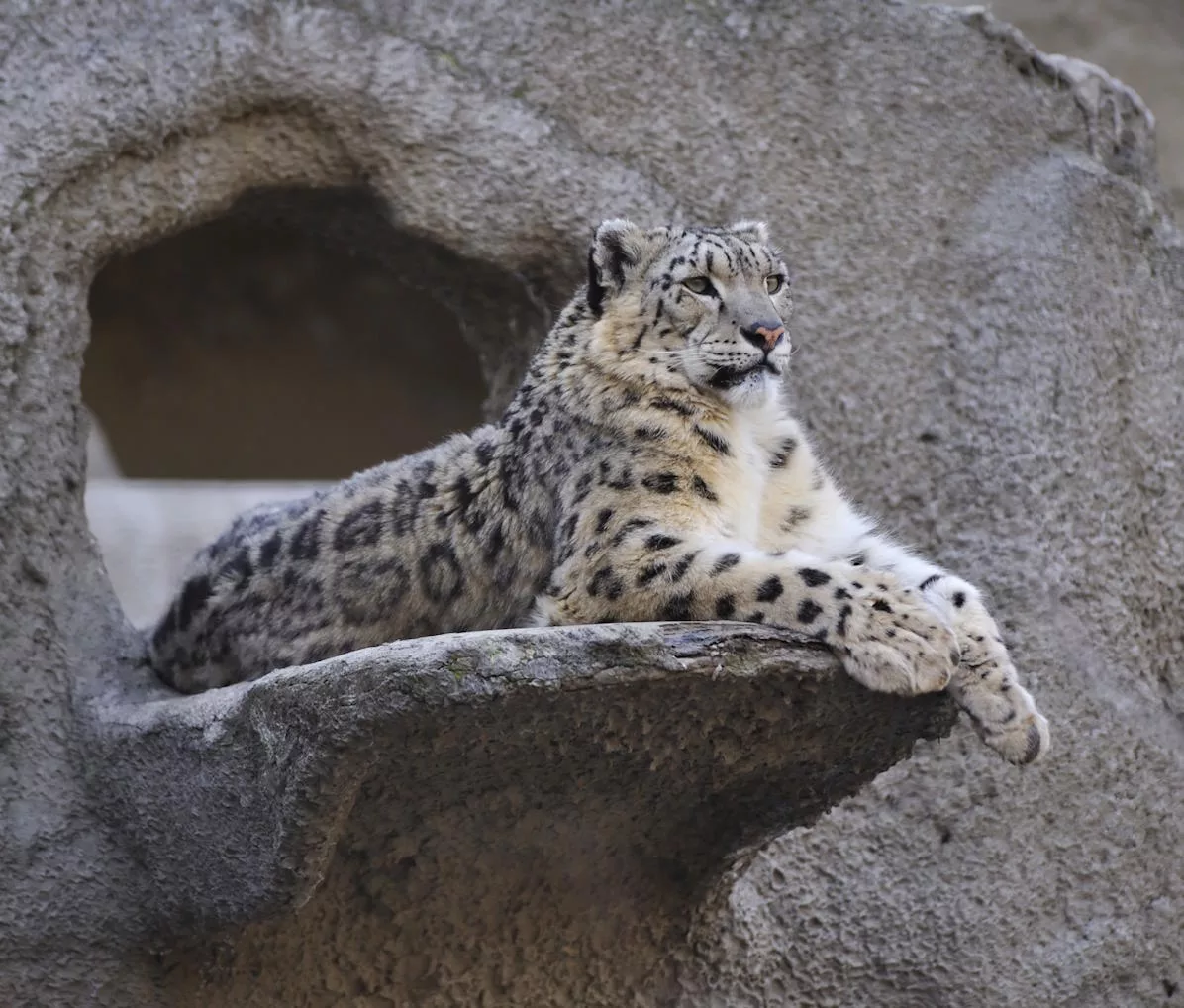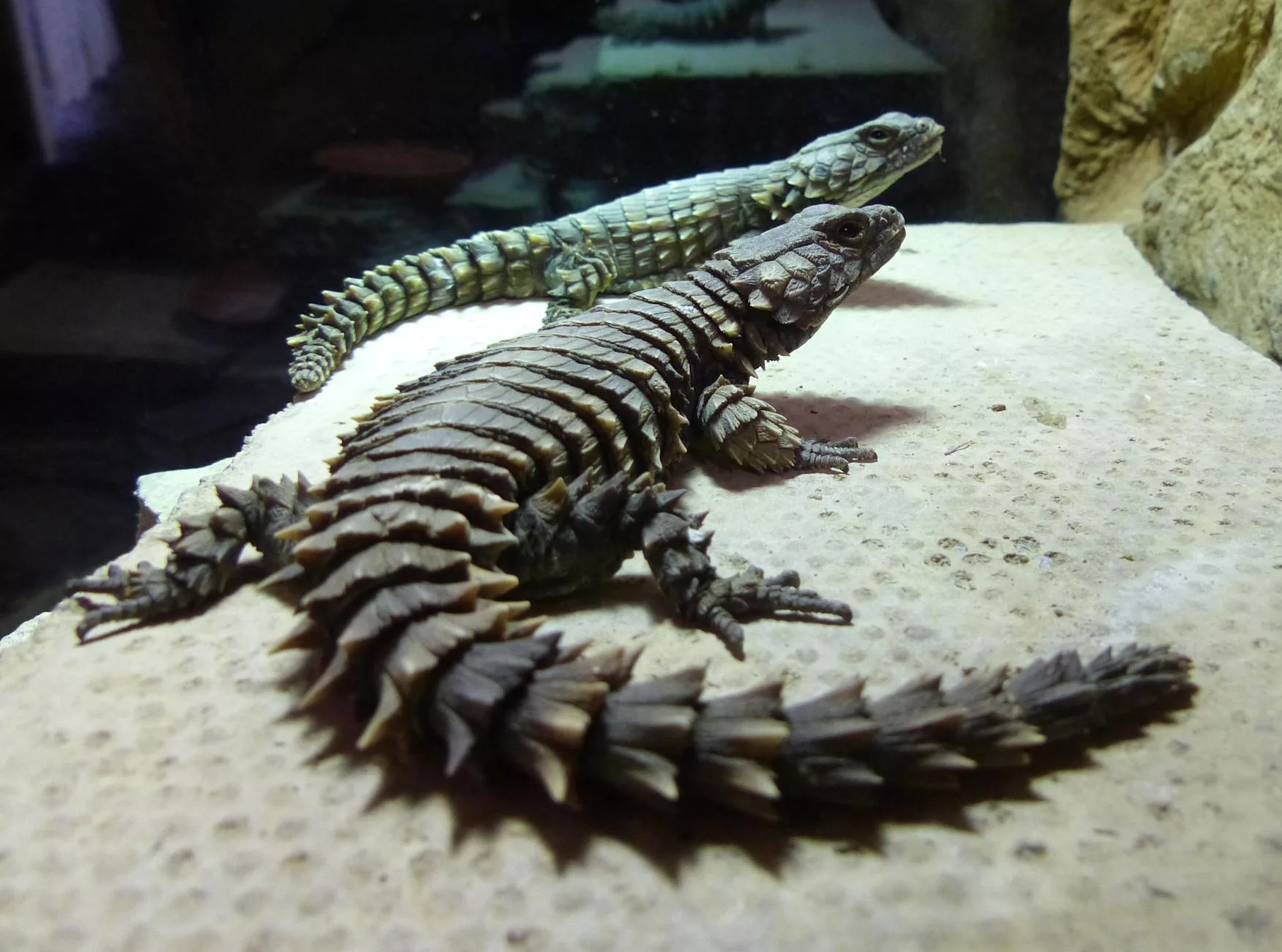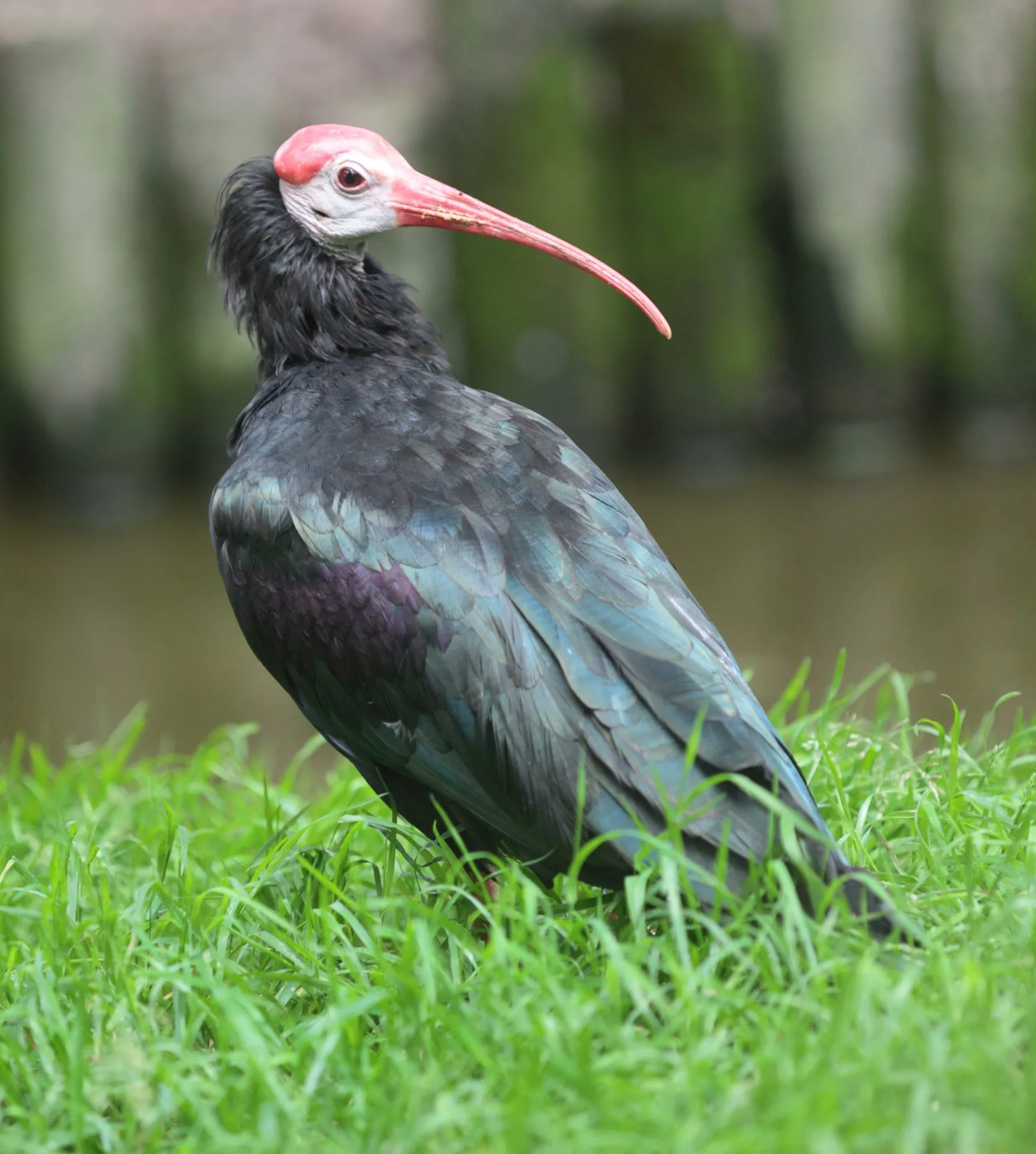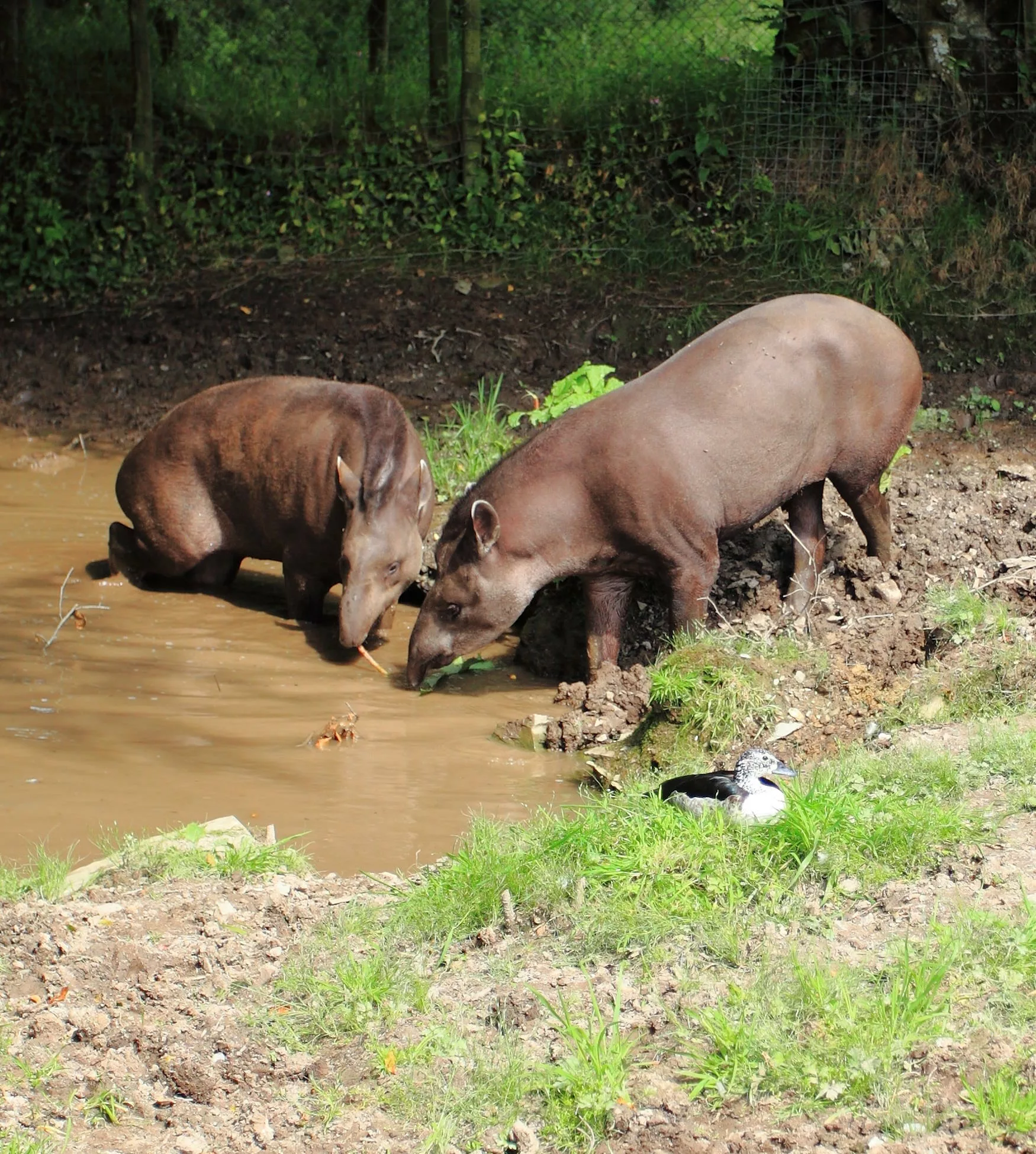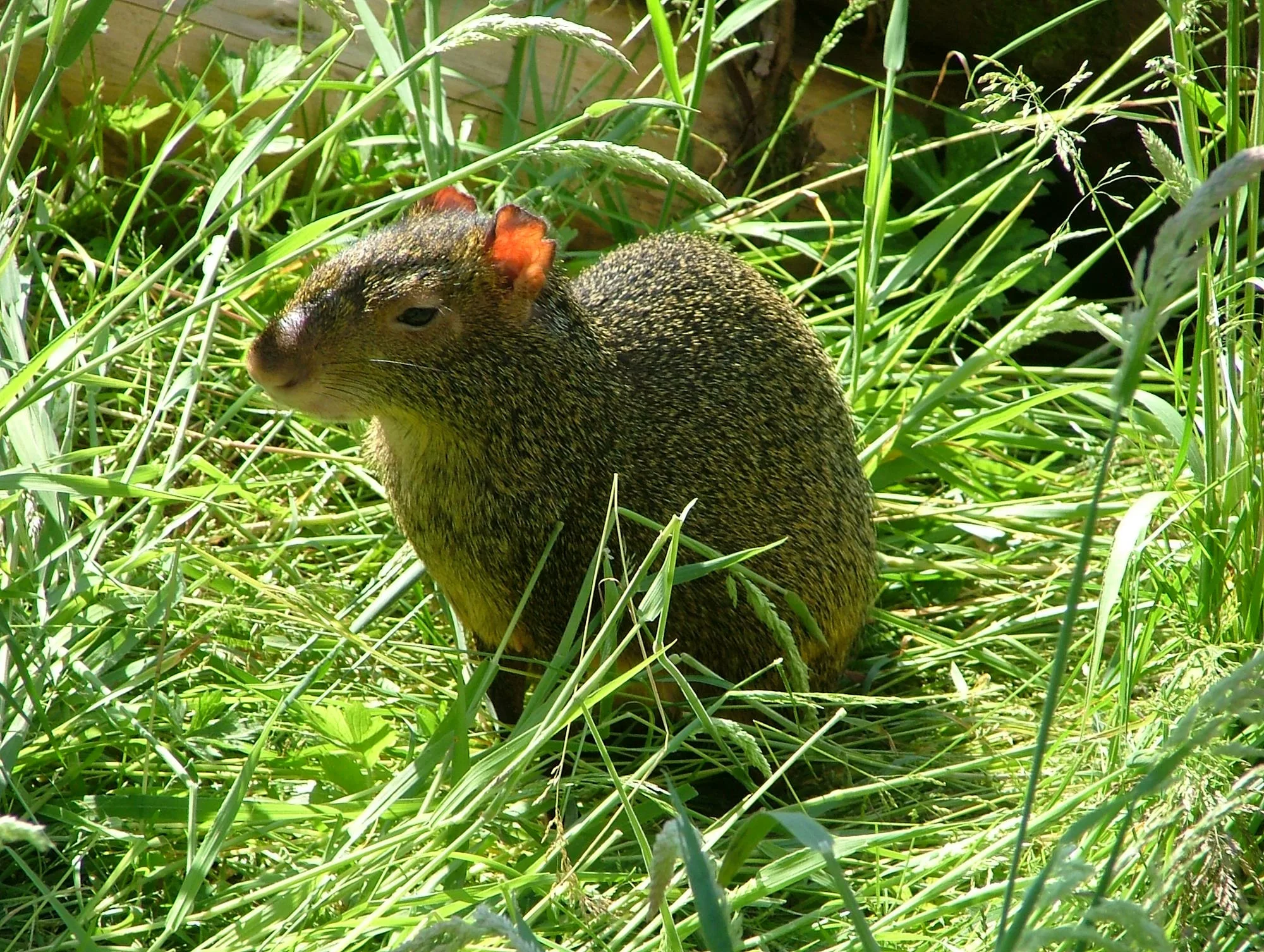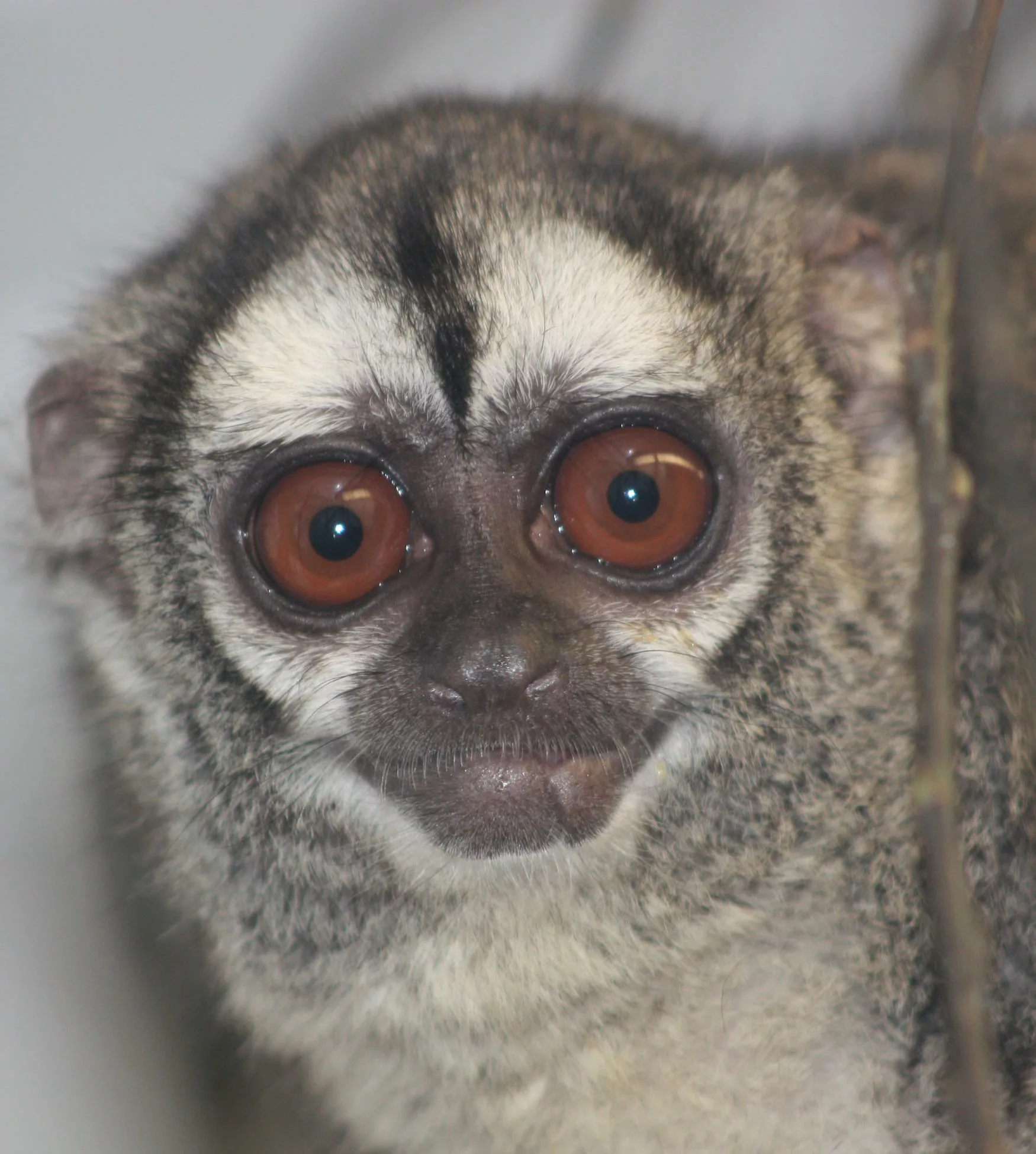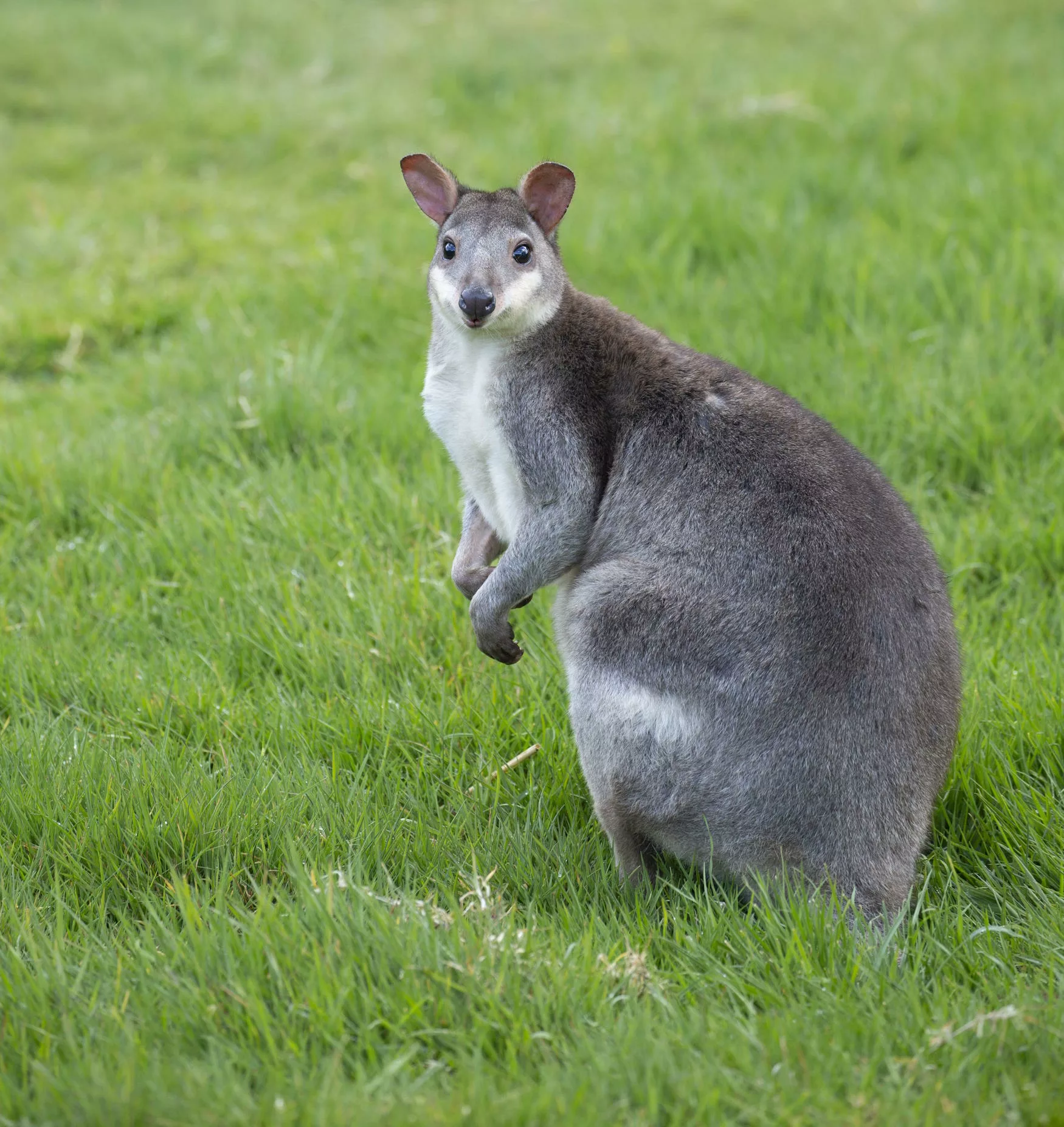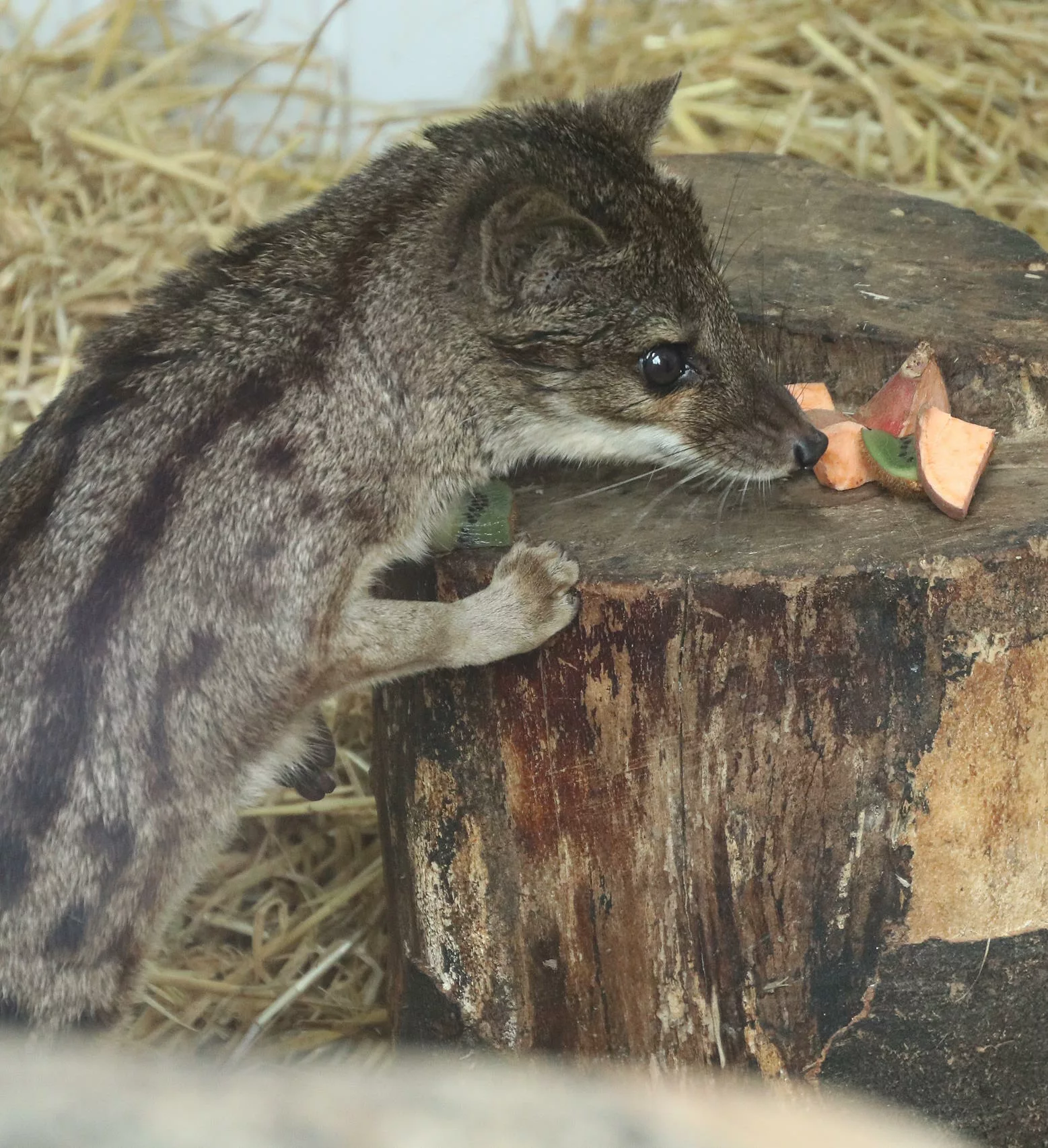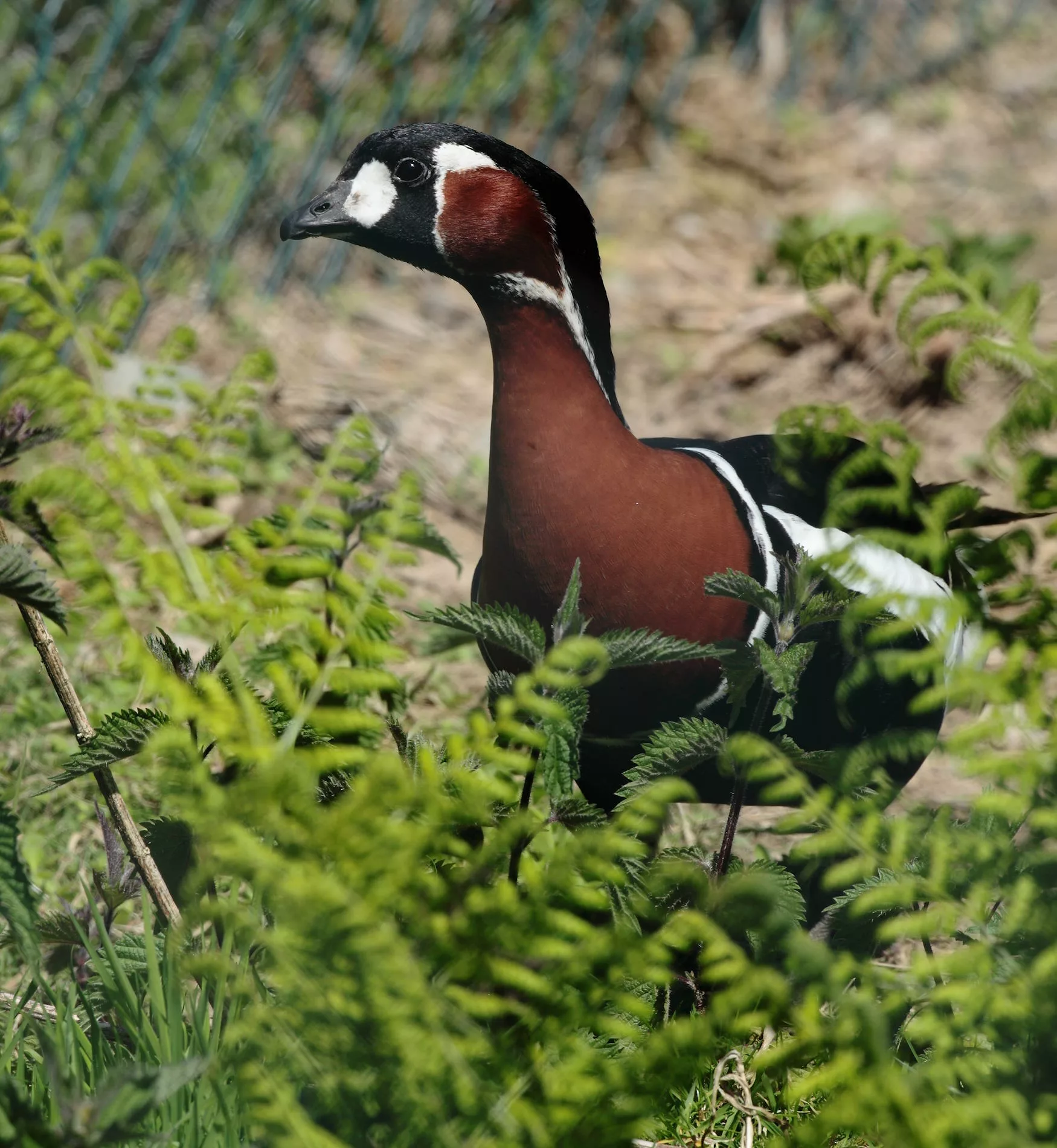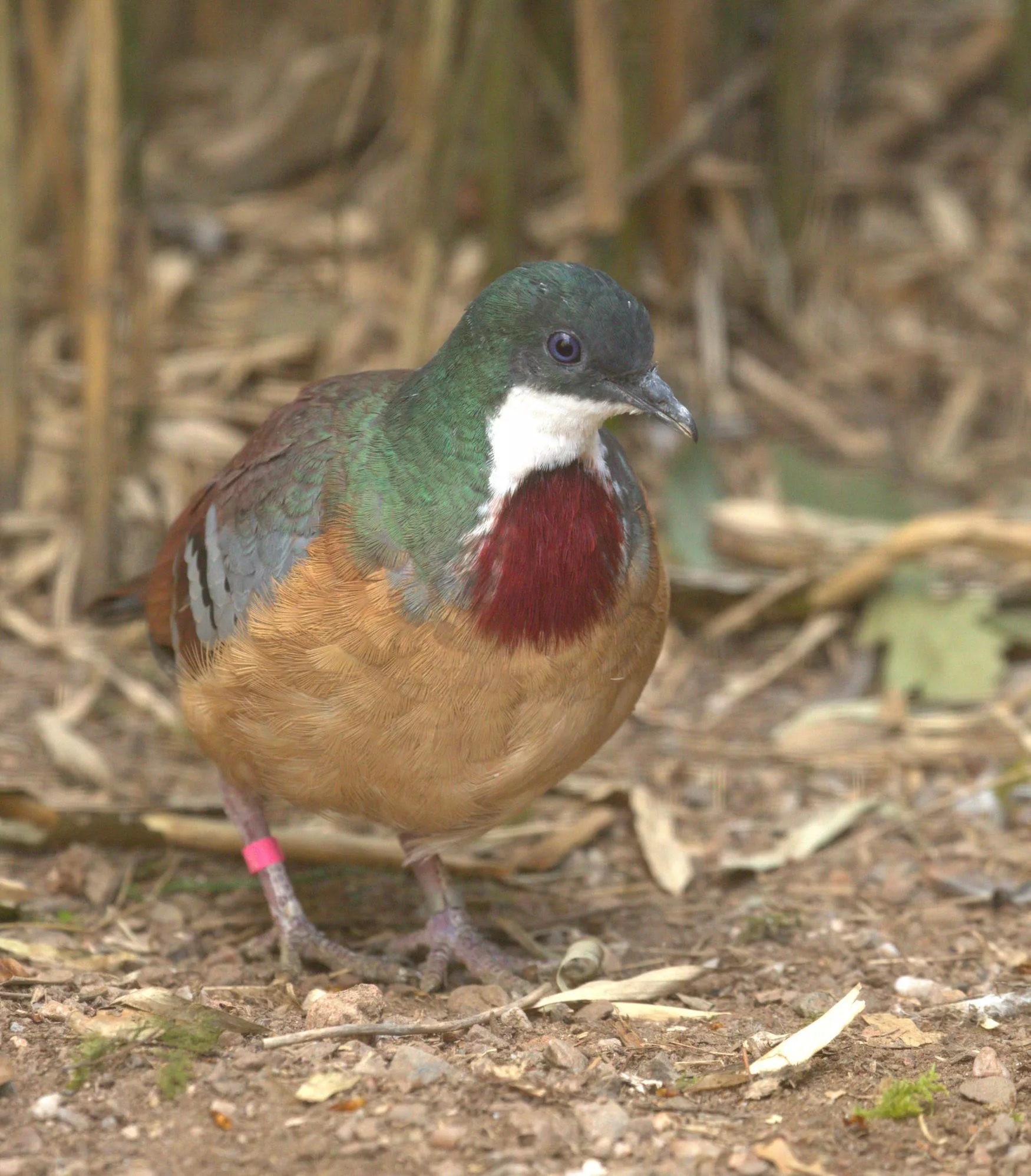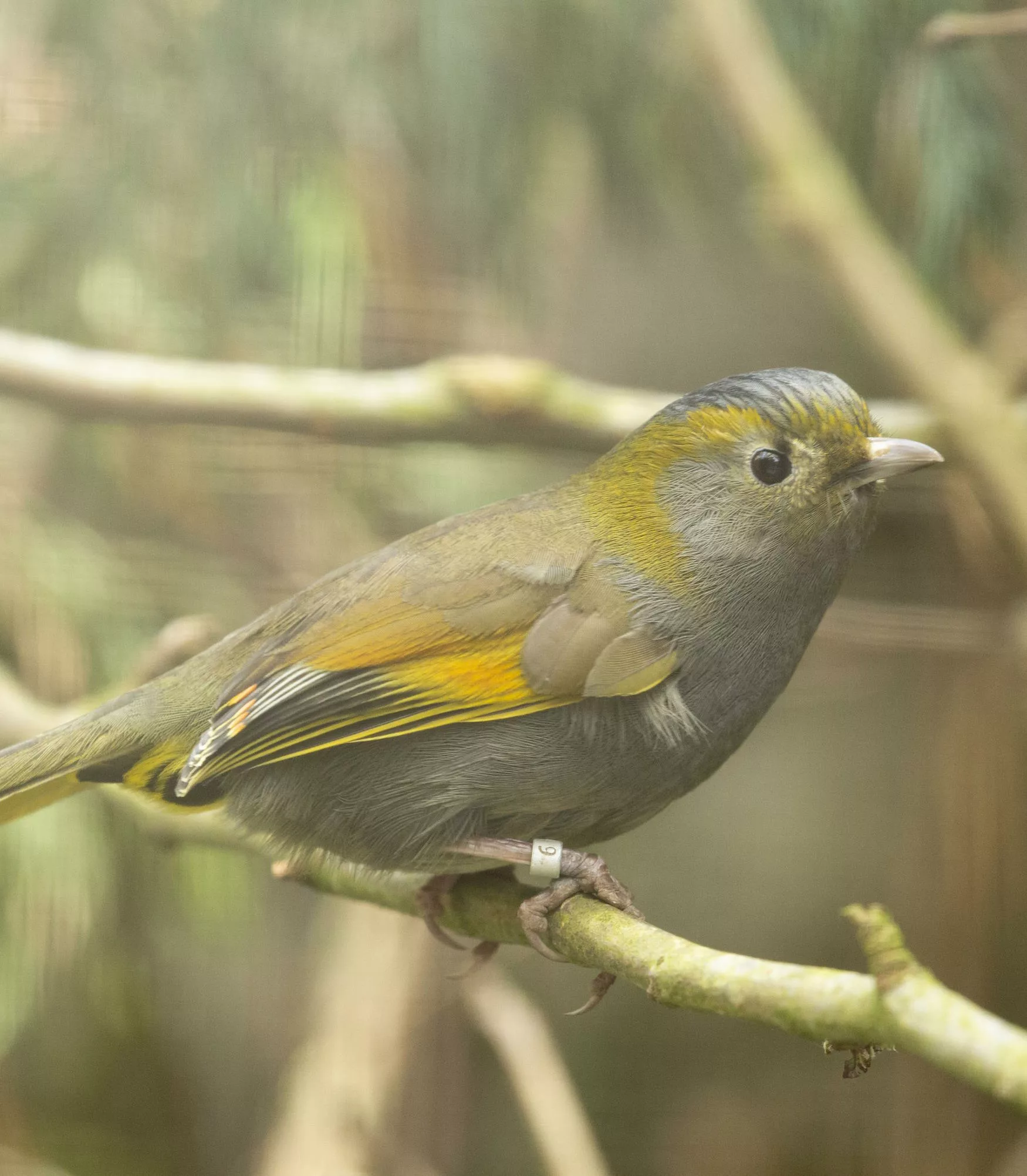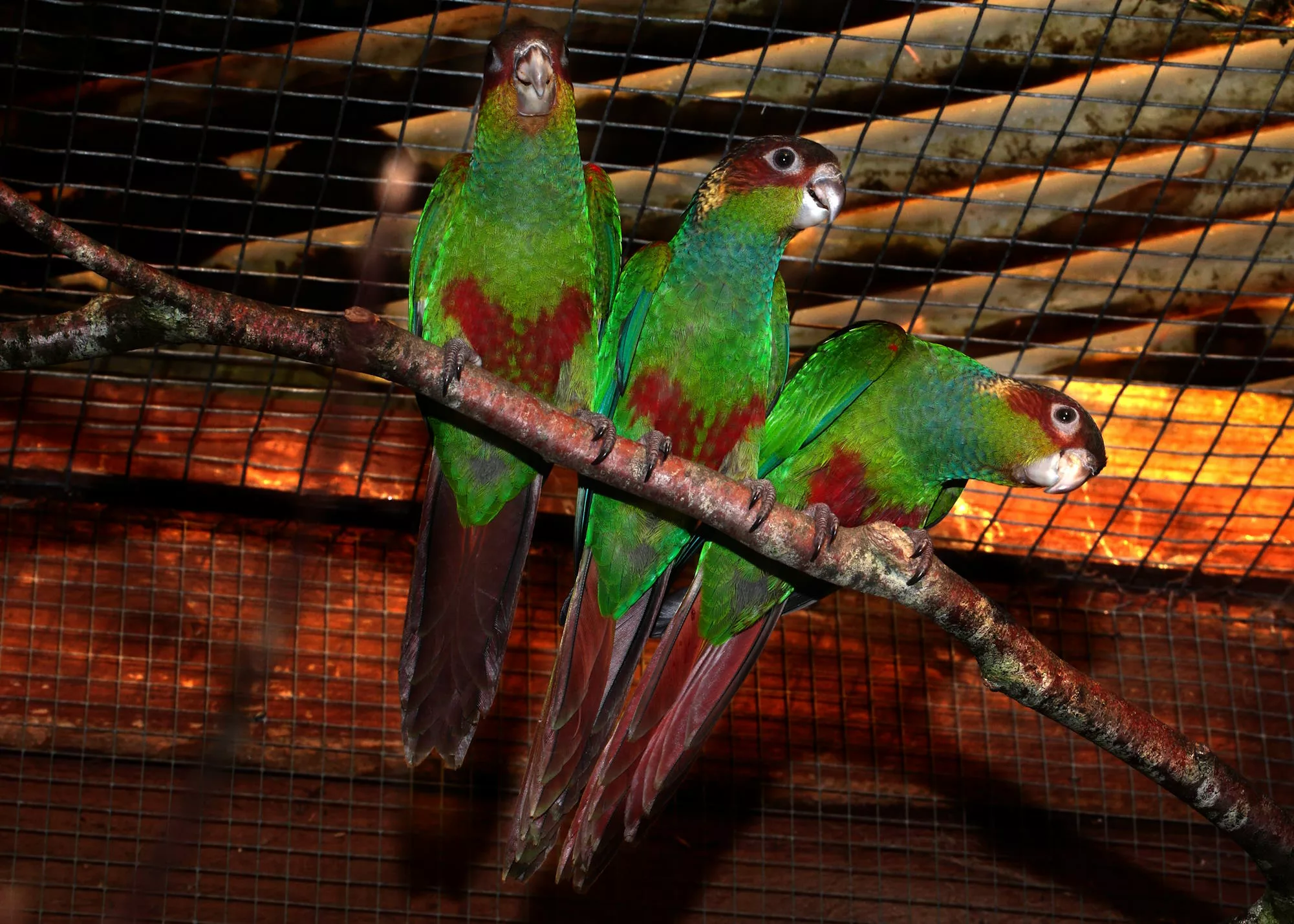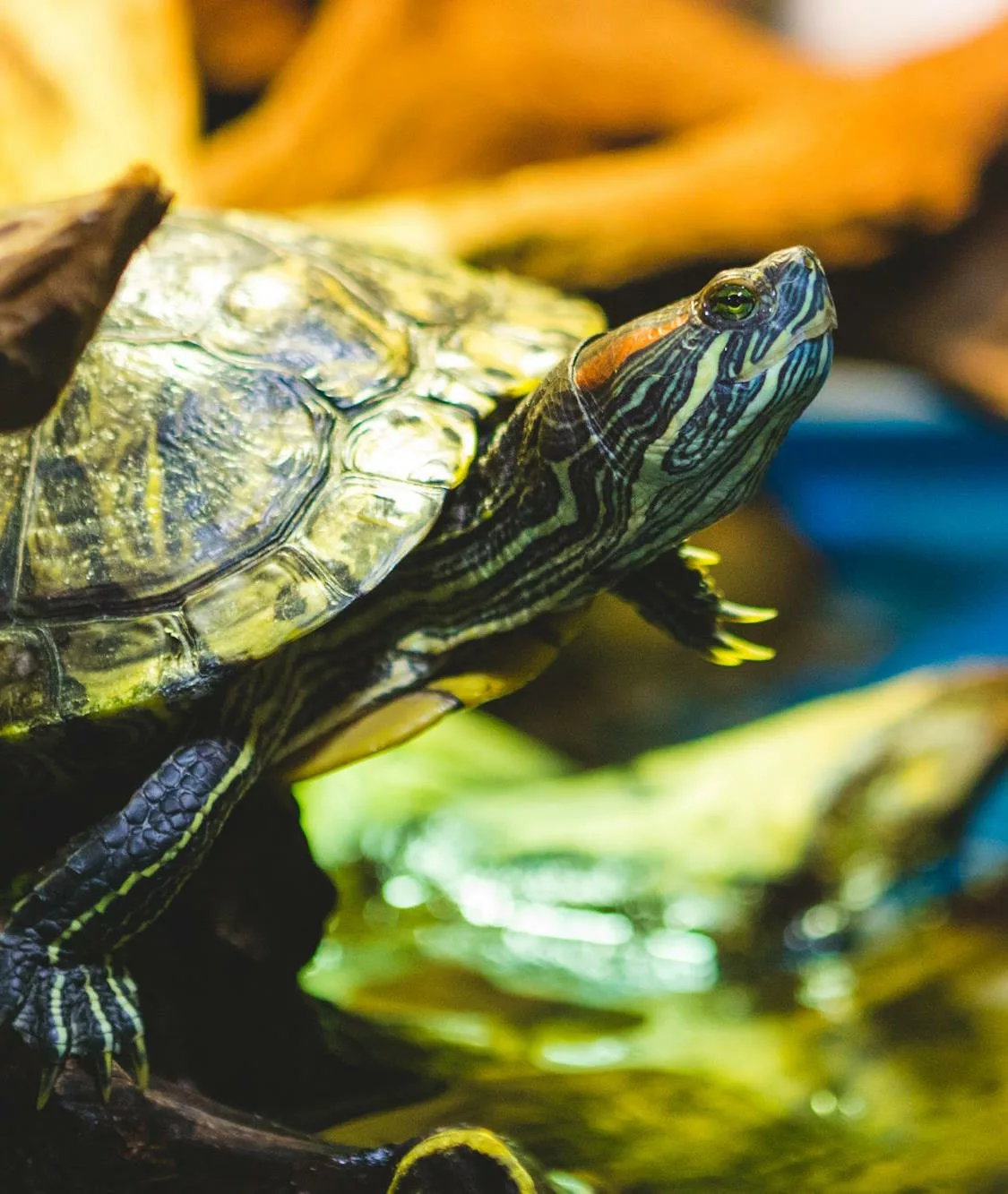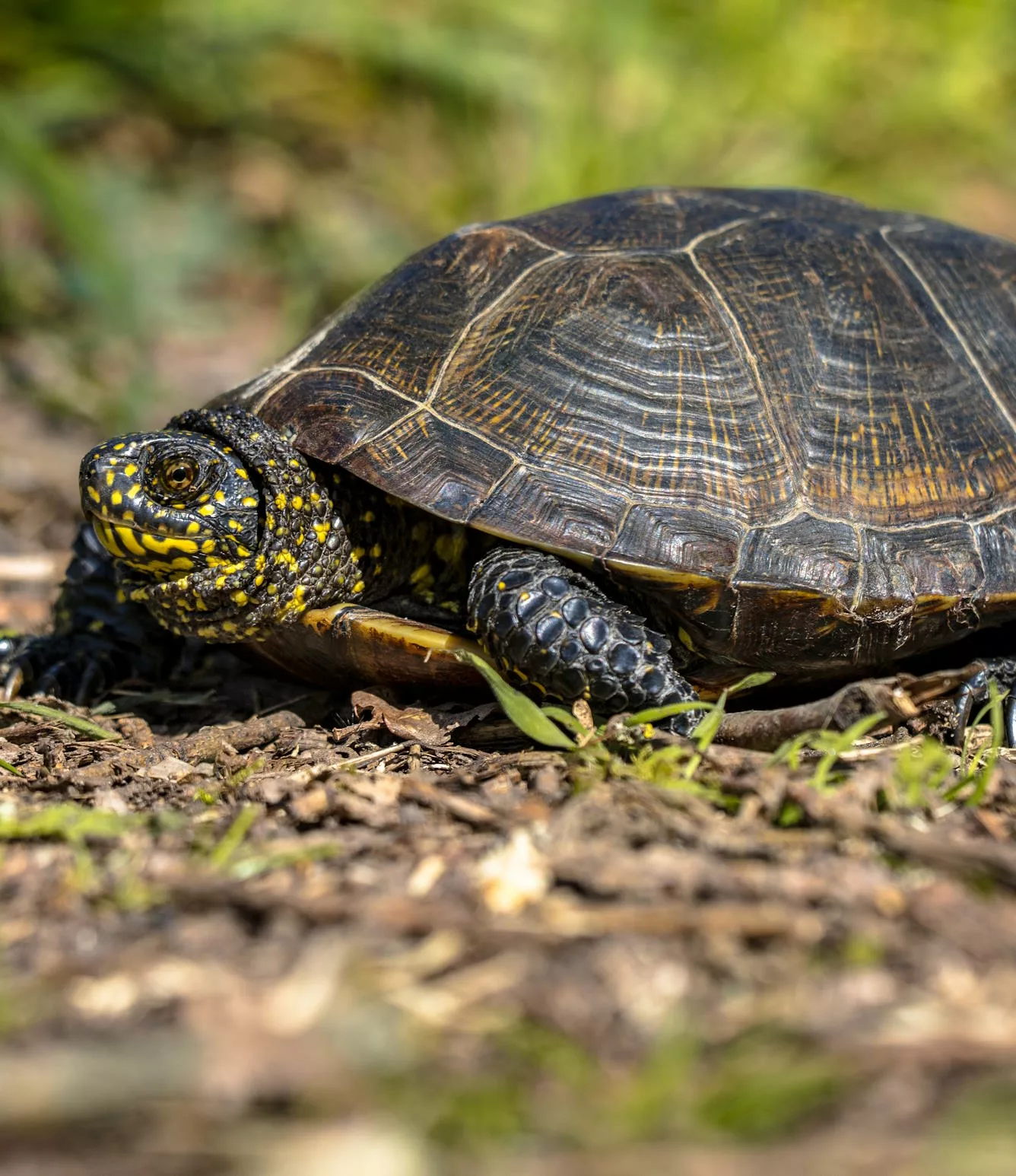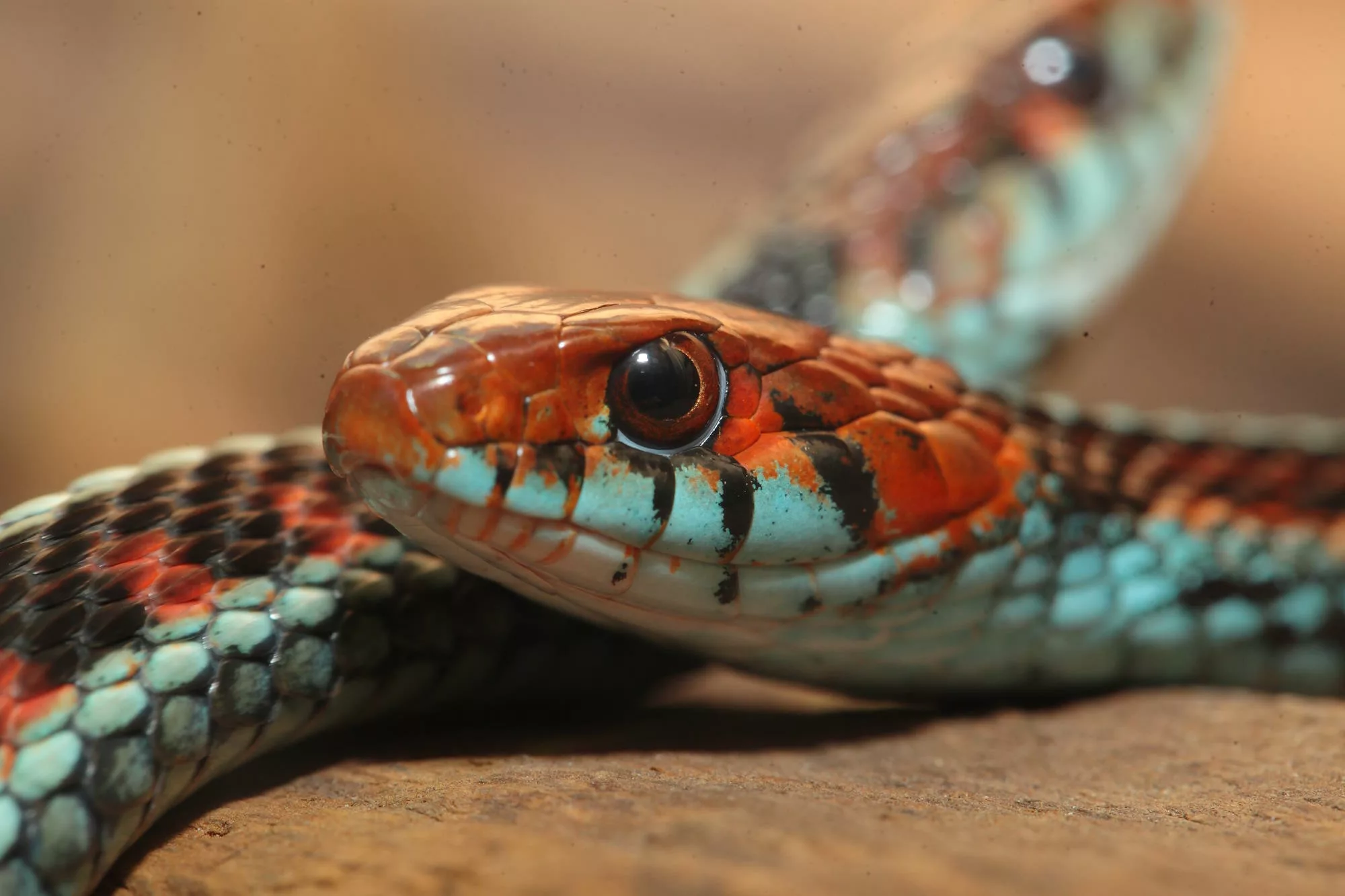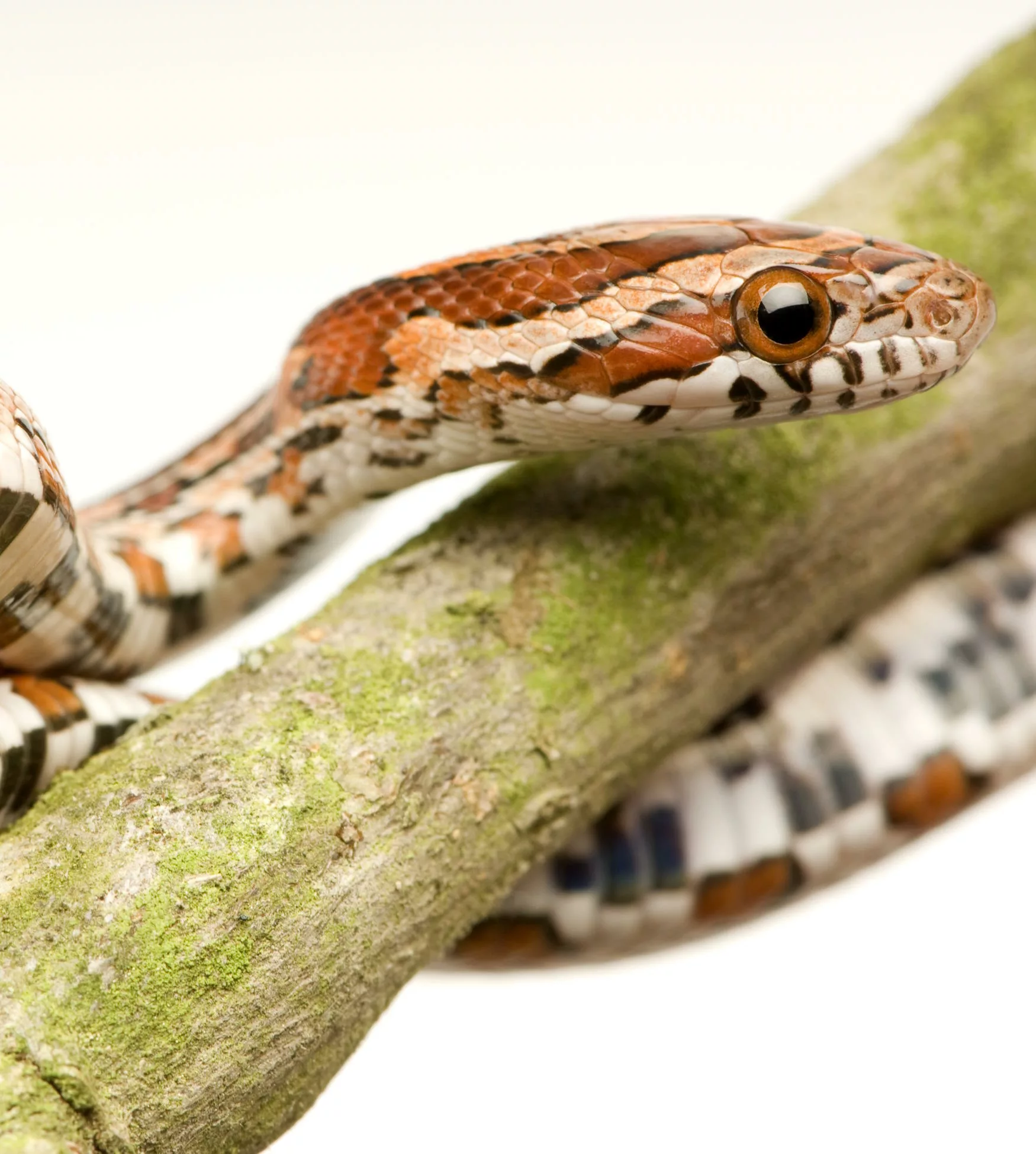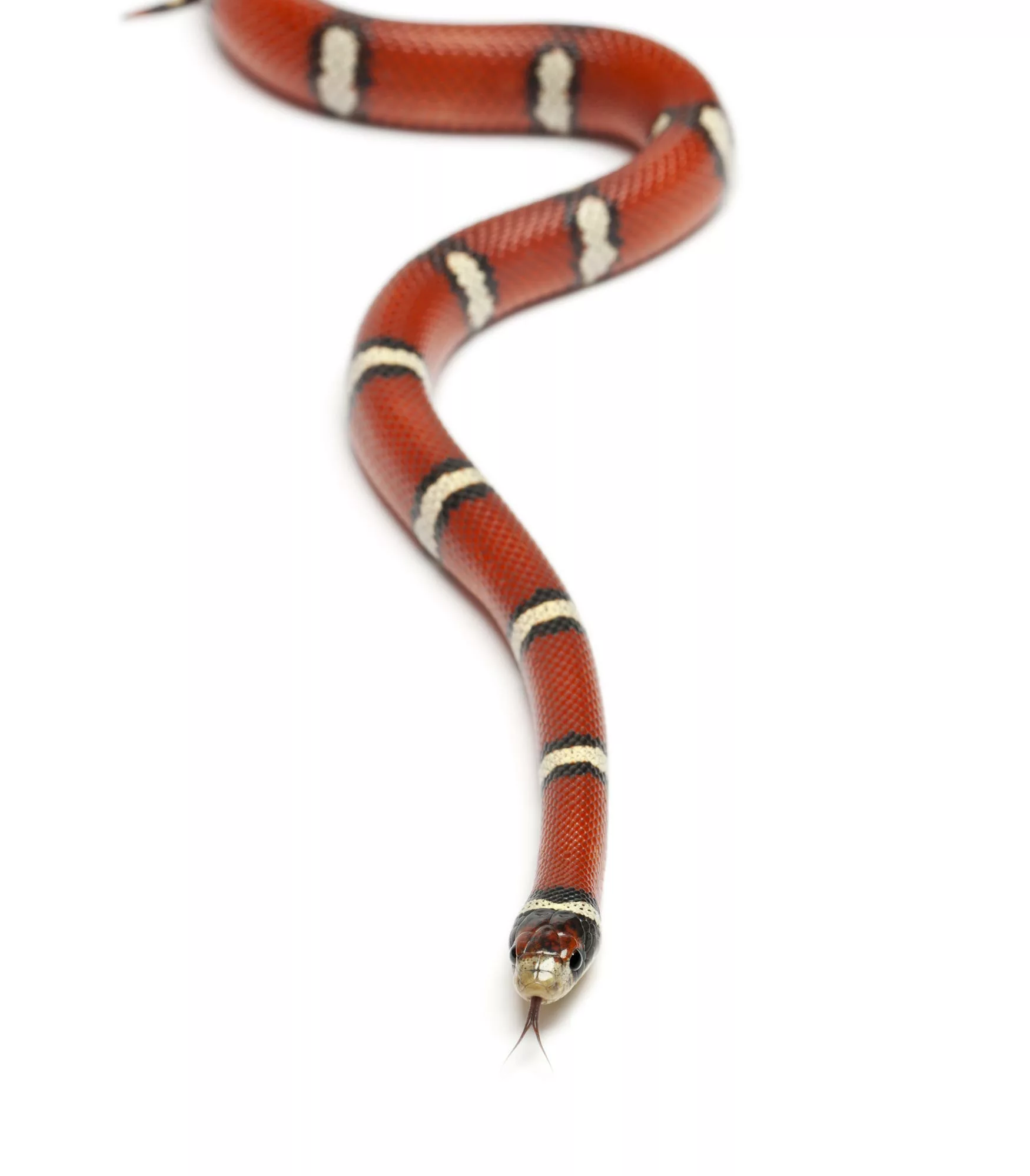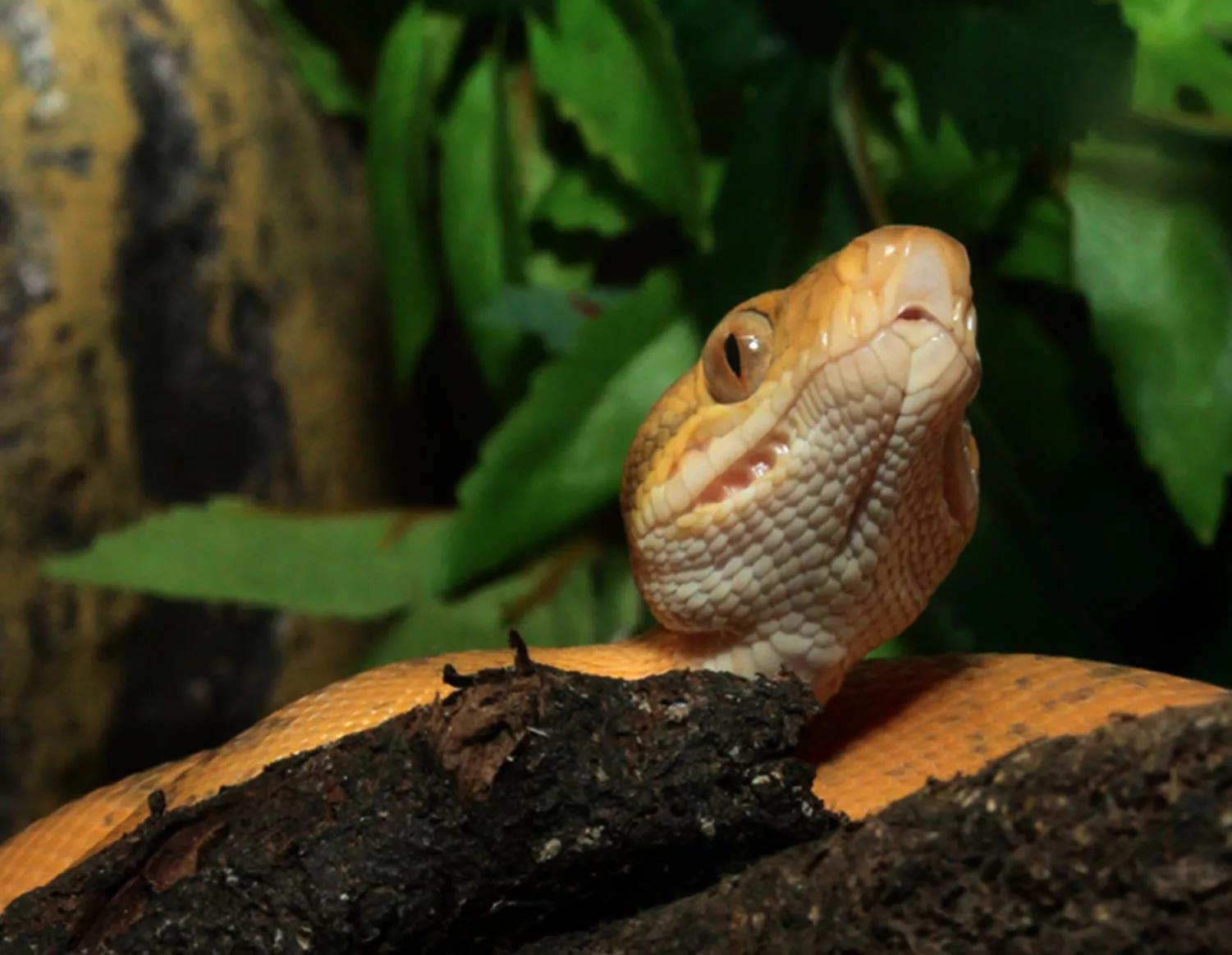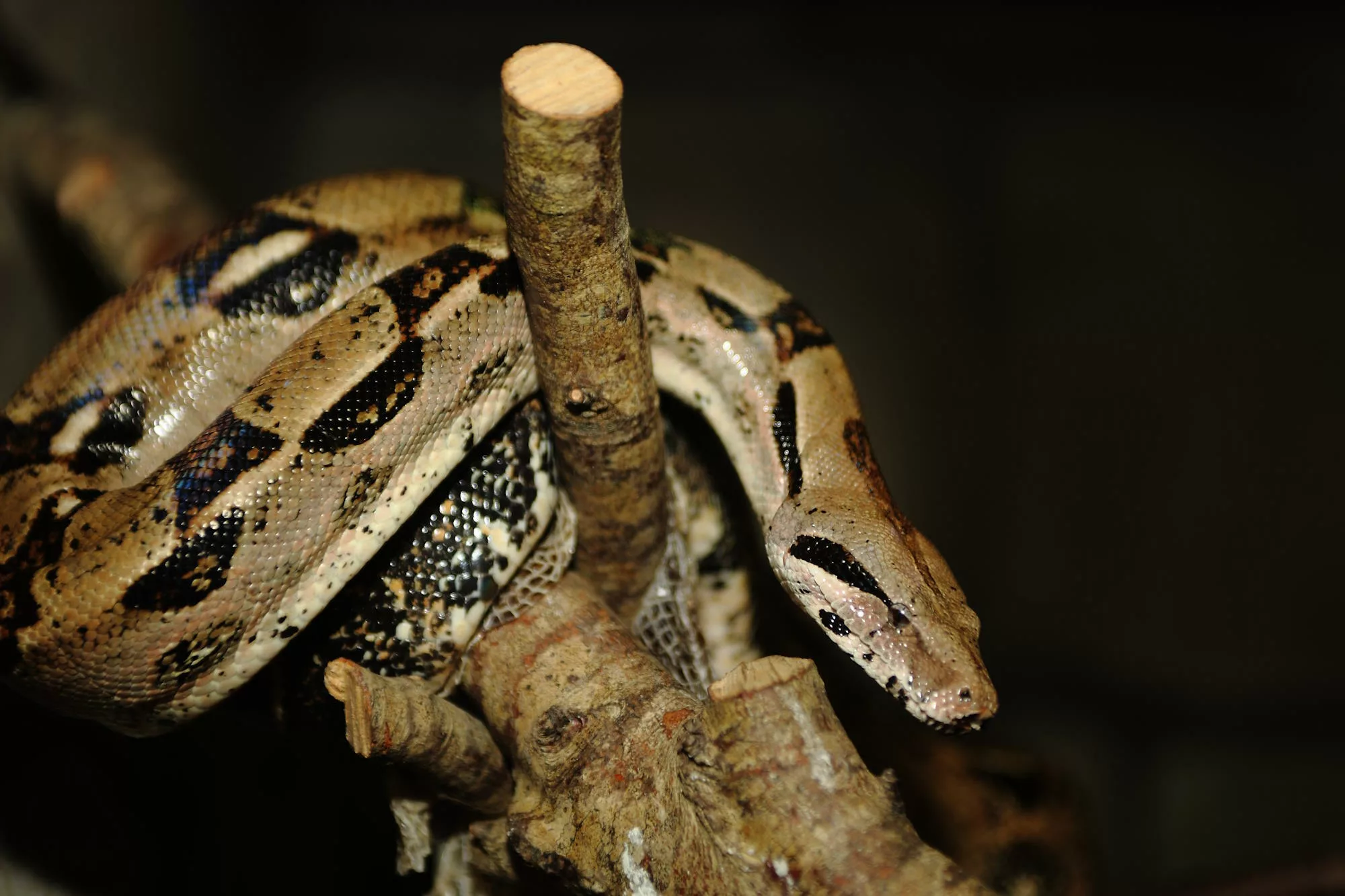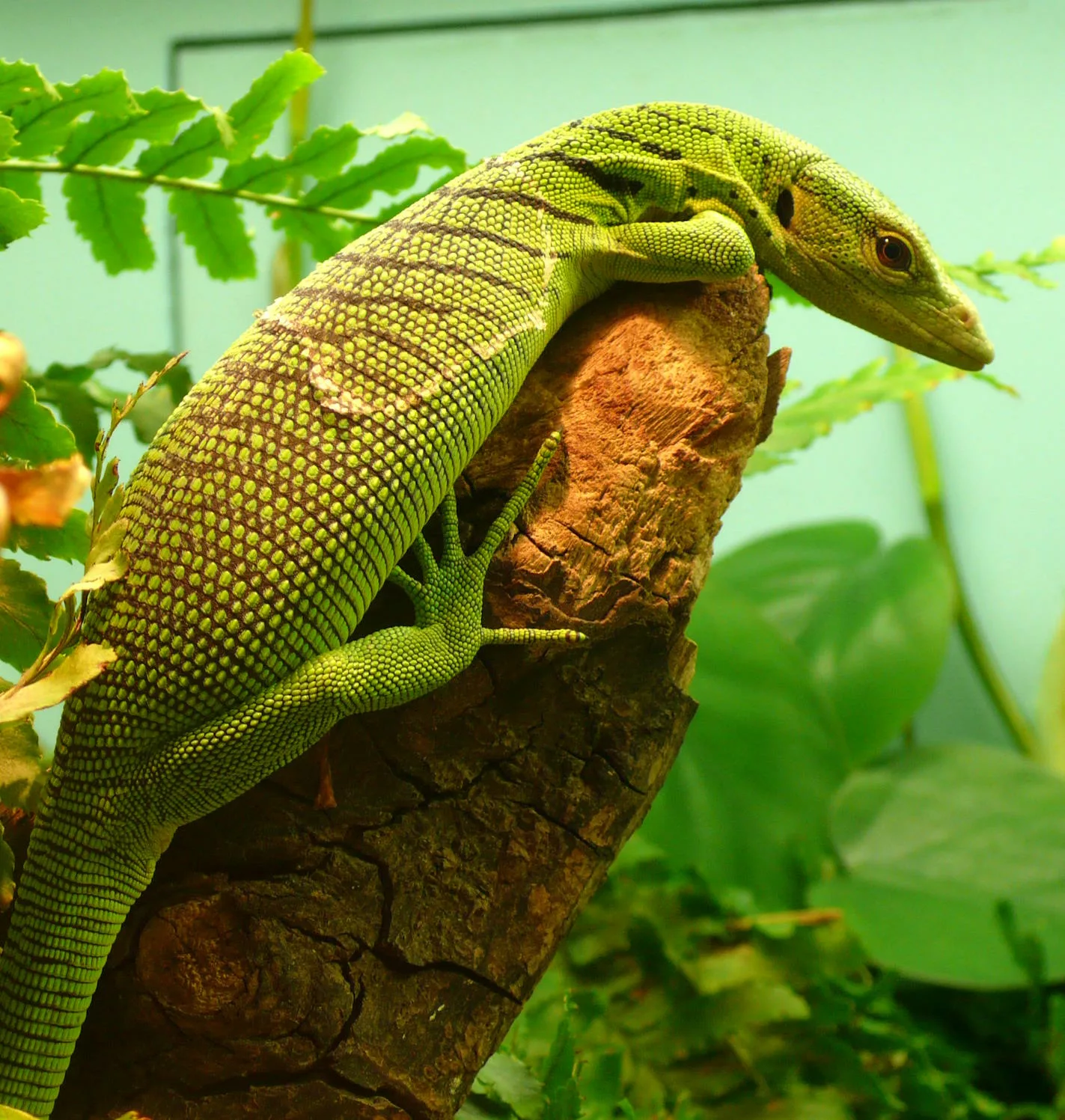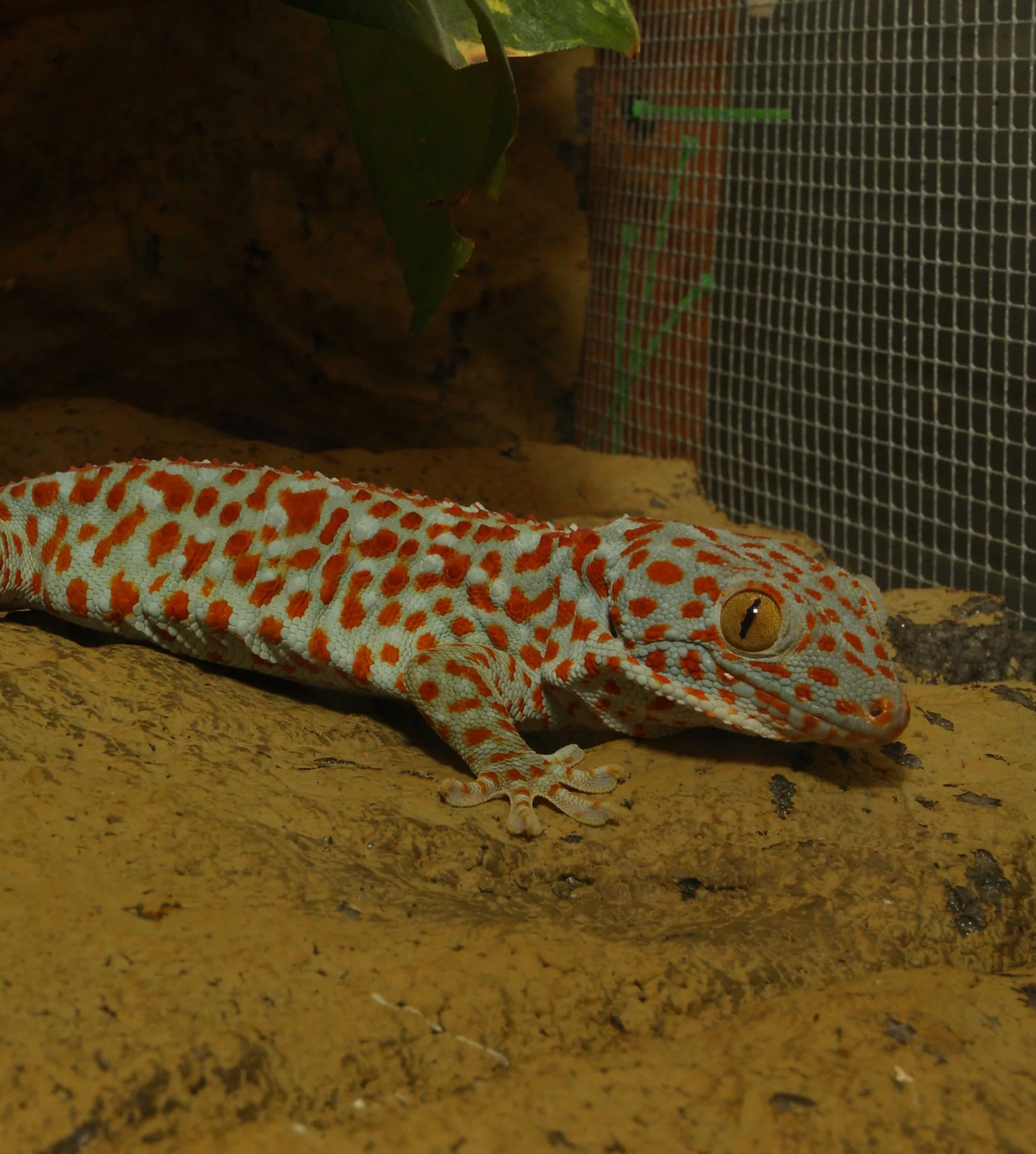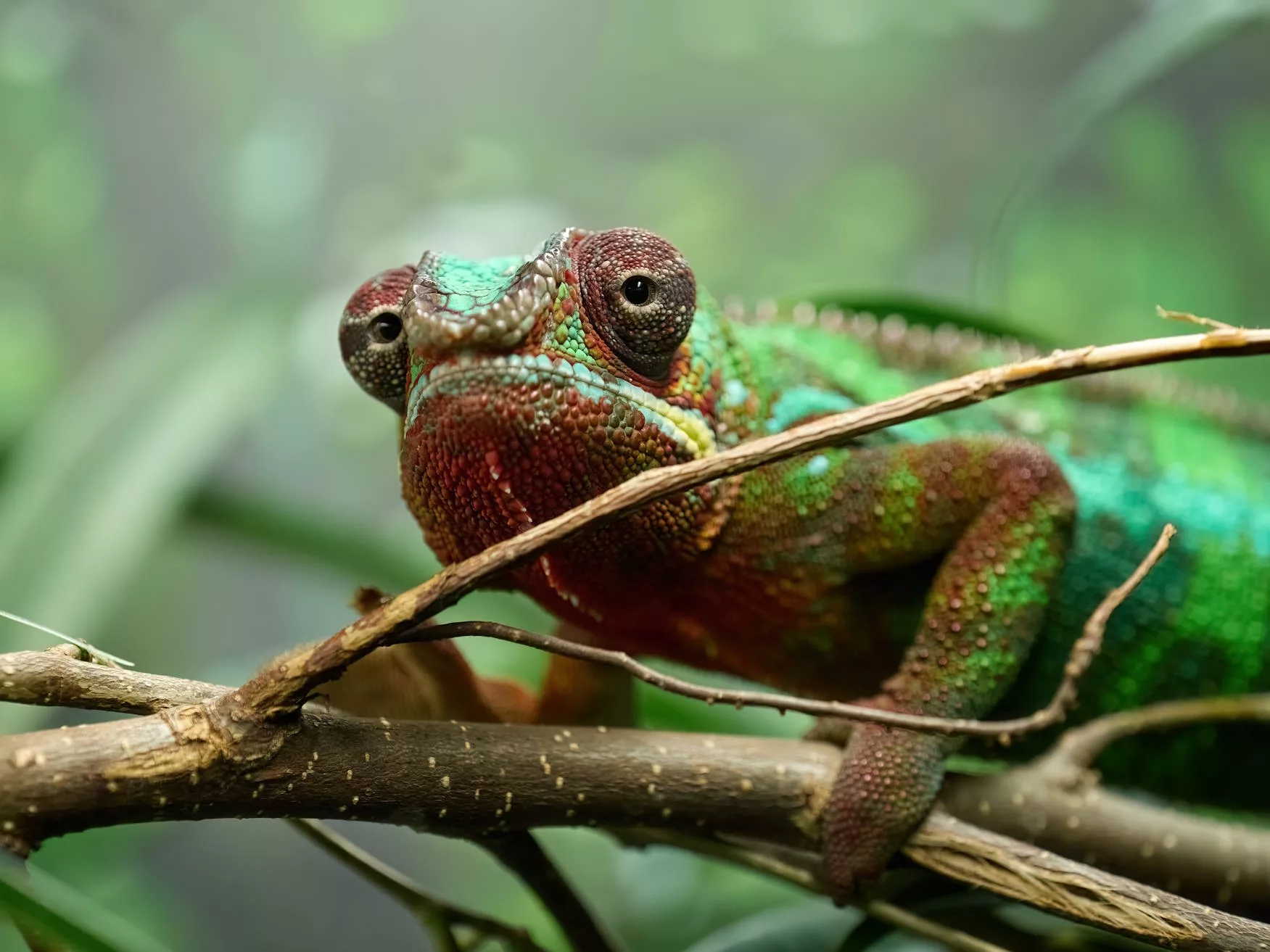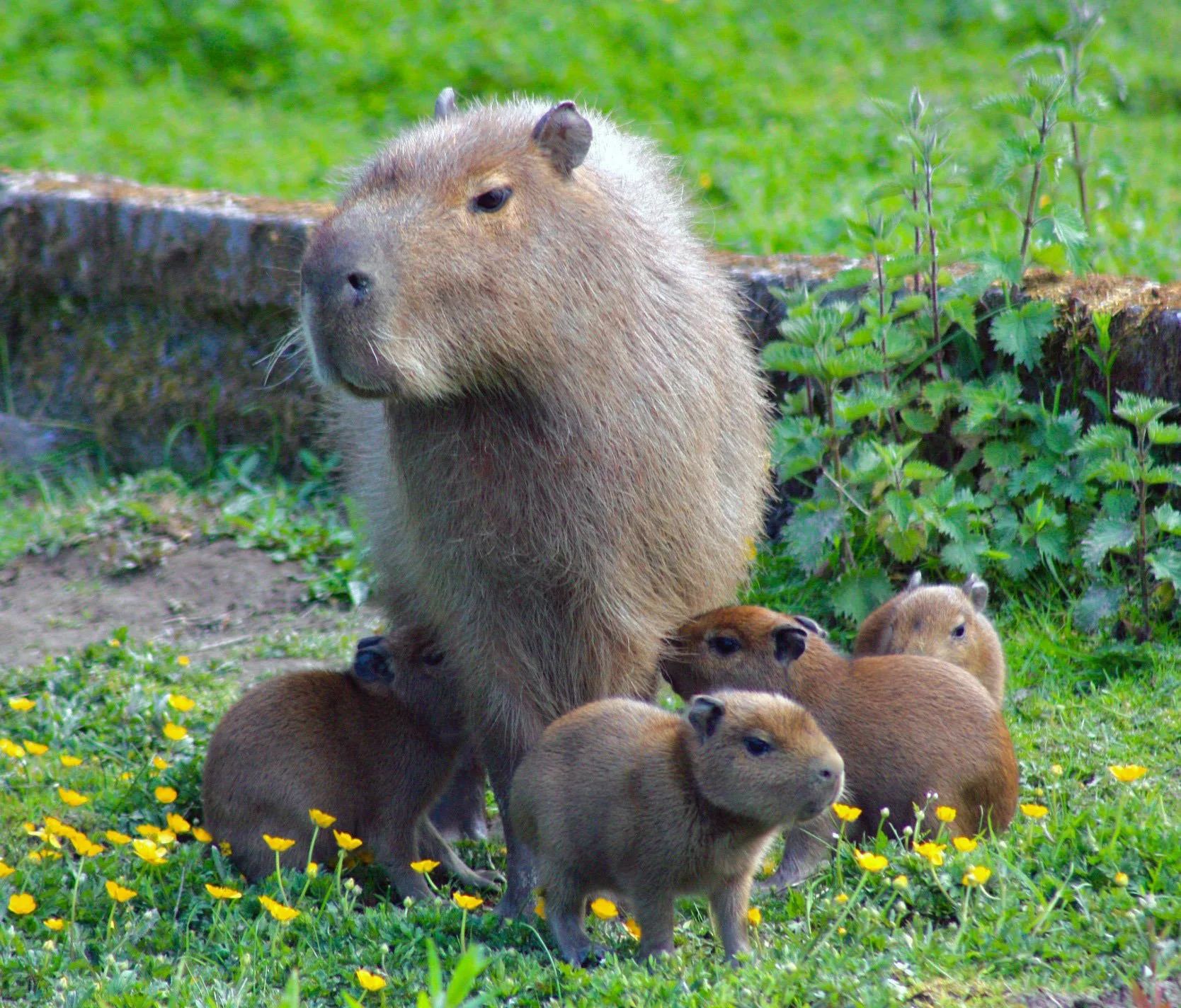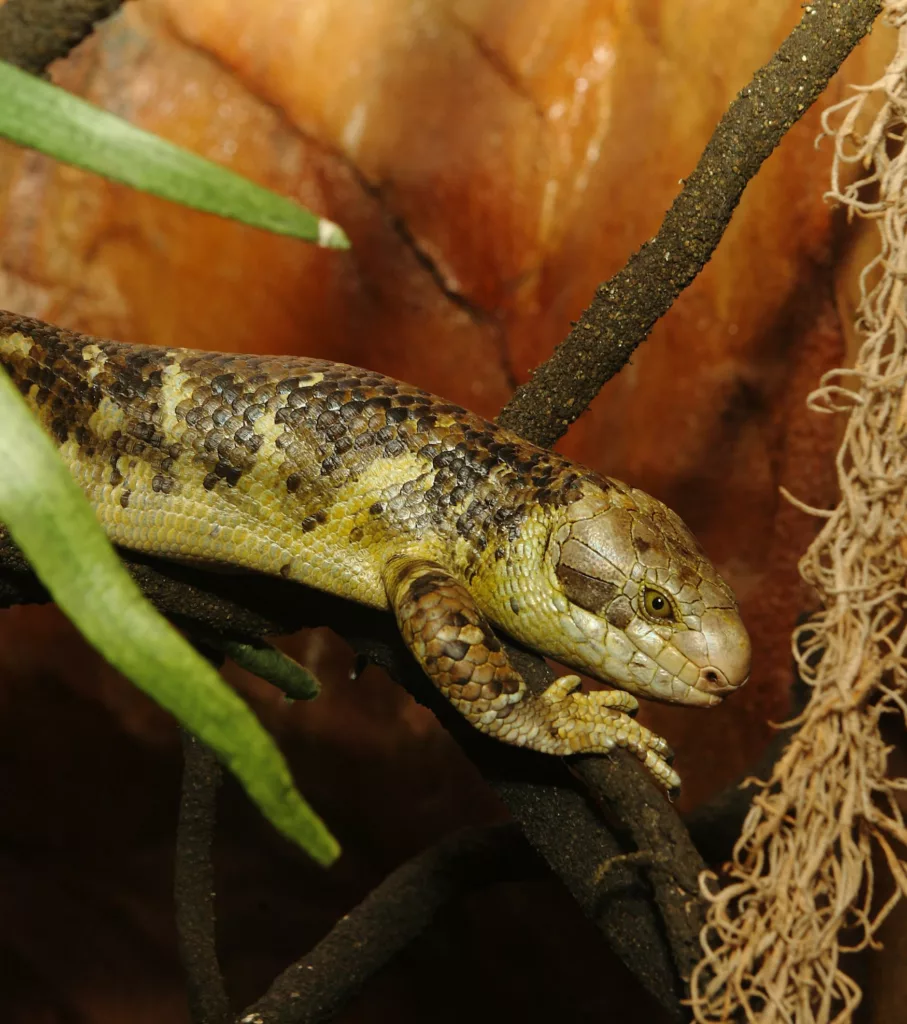
Prehensile-tailed skink
Scientific name: Corucia zebrata
IUCN listed as: Near Threatened
Learn before you visit!
Here are some facts about the species – Discover what they eat, find out about their natural habitat, see what they like to do, and more… Set the reading style to suit you too, everyday speak or something aimed towards children.
Child-friendly
Everyday
Diet
The Prehensile-Tailed Skink is primarily herbivorous, feeding on leaves, flowers, fruits, and shoots of various plants, including the somewhat toxic Epipremnum species. In captivity, their diet is supplemented with vegetables, fruits, and greens, often enriched with vitamin supplements to ensure proper nutrition. They are nocturnal feeders, relying on their strong sense of smell to locate food. This diet supports their slow metabolism and arboreal lifestyle. In the wild, their feeding habits contribute to the maintenance of their forest habitats by aiding in plant propagation.
Prehensile-Tailed Skinks eat leaves, flowers, fruits, and shoots of plants. In zoos, they also get vegetables and fruits to stay healthy. They find their food at night using their sense of smell. This diet helps them live well in the trees.
Breeding
Breeding in Prehensile-Tailed Skinks is unique among reptiles as they are viviparous, giving birth to live young rather than laying eggs. Females typically have a gestation period of 6-7 months and give birth to one or two large offspring, which are about one-third the size of the mother. The young are born fully formed and are immediately able to climb and forage. This reproductive strategy, along with parental care from both the male and female, helps increase the survival rate of the offspring. The social structure of these skinks includes a communal group known as a circulus, which provides additional protection for the young.
These skinks give birth to live babies after being pregnant for about 6-7 months. They usually have one or two babies at a time. The babies can climb and eat right after they are born. Both parents help take care of the young ones.
Habitat
The Prehensile-Tailed Skink is native to the Solomon Islands, inhabiting the upper canopy of tropical rainforests. They prefer areas with dense foliage that provide ample food and cover from predators. Their arboreal nature means they spend most of their lives in trees, rarely descending to the ground. The primary threats to their habitat include deforestation for logging and agriculture, which significantly reduces their living space. Conservation efforts are focused on protecting their natural habitats and implementing sustainable land-use practices.
Prehensile-Tailed Skinks live in the rainforests of the Solomon Islands. They spend most of their time in trees. Their homes are being cut down for logging and farming. Protecting these forests is important for their survival.
At the zoo
In zoos, Prehensile-Tailed Skinks are housed in enclosures that replicate their natural rainforest environment, with plenty of climbing opportunities and dense vegetation. Their diet is carefully managed to include a variety of leafy greens, vegetables, fruits, and vitamin supplements to mimic their natural diet. Zoos play a critical role in the conservation of these skinks through breeding programs and public education. These efforts raise awareness about the threats they face in the wild, such as habitat destruction and illegal pet trade. Breeding programs in zoos help maintain genetic diversity and support the overall population.
In zoos, these skinks live in places with lots of plants and branches to climb. They eat leafy greens, fruits, and vegetables. Zoos help protect them by breeding them and teaching people about them. This keeps their numbers strong.
Behaviour
Prehensile-Tailed Skinks are nocturnal and arboreal, using their prehensile tails to navigate the tree canopy. They are social creatures, often found in family groups or circuli, where they exhibit cooperative behaviours such as grooming and mutual protection. Males are territorial and will defend their home range aggressively against intruders. These skinks rely heavily on their sense of smell and visual cues to communicate and navigate their environment. Their behaviour is well adapted to a life spent predominantly in the trees.
These skinks are active at night and use their tails to move through trees. They live in family groups and help each other. Males protect their territory from other skinks. They use smell and sight to communicate.
Fun facts
- Prehensile Tails: They use their tails to grip branches like an extra hand.
- Live Births: Unlike most reptiles, they give birth to live young.
- Nocturnal Feeders: They eat at night, using their strong sense of smell to find food.
- Social Creatures: They live in groups called circuli, where they help each other.
- Arboreal Life: They spend almost their entire lives in the trees.
- Tails for Climbing: Their tails help them hold onto branches.
- Babies Born Alive: They have live babies instead of laying eggs.
- Night Eaters: They look for food at night.
- Family Groups: They live in groups and help protect each other.
- Tree Dwellers: They live high up in the trees.
More animals to discover at our zoo
Quick Links
Tickets & Prices
You can buy tickets for Exmoor Zoo securely online, as well as finding out more price options, discover offers, and more…
What’s on…
Exmoor Zoo hosts incredible Events all through the year. You can find out about what we’ve got in store here…
Routes & info
Like any great discovery, Exmoor Zoo can feel a little off the beaten path – but don’t worry – you can plan your journey with our recommended routes and other useful travel info.
